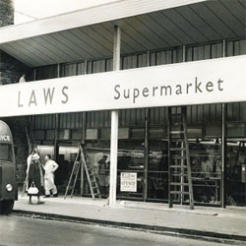Rob Dyson reveals how he used social media to capitalise on ITV's popular singing extravaganza.
Checking my Facebook account last weekend was a bit like gatecrashing Roger Rabbit's birthday party; friend's profile pictures had been replaced by avatars of Speedy Gonzales, Mumm-Ra and Penelope Pitsop.
Another meme had been born. In October, women cheekily declared 'where they like it...' in their Facebook status (referring to - ahem - where they leave their handbag in the house) to raise awareness of breast cancer. The whisper campaign was shared virally, and part of the fun was to get men wondering what on earth they were talking about.
This time around another unofficial viral aimed to raise awareness 'for' the NSPCC; encouraging people to change their profiles to favourite cartoon characters.
Perhaps I'm a party pooper (I've never been much of a fancy-dress fan), but I didn't join in. What I did do was donate my status to a bloglink talking about the NSPCC which pointed people to its donation page. I don't blame these 'free agent' creators of social media memes - they are clearly savvy to what makes a good viral, based in simple actions which get people talking and adopting.
But I do wonder whether charities themselves could harness the social web in smart and opportunistic ways, and instil key messages (e.g. "it's important to check your breasts") into tweets and status updates.
Back in Tesco?
I had a go on Saturday night, when watching Twitter and Facebook chatter about X-Factor contestant Mary. My Twitter stream was full of people saying she'd be out of the competition and back in her supermarket job imminently following another pub-singer performance.
I tweeted: "When Mary's back in Tesco on Monday, don't forget to buy @WhizzKidz Xmas cards while you're queuing for an autograph: http://bit.ly/eMbsHJ" The hyperlink sent followers to a page on Whizz-Kidz's website to find the nearest Tesco and buy our Blue Peter Appeal Christmas cards. I repeated the call to action in my Facebook status.
Within five minutes, five people had retweeted me (meaning their combined followers of over 2,000 friends potentially saw my message). I also got a handful of 'likes' on my facebook status. I don't know how many people will go and buy the cards, but I was quietly excited by the fact that my 140 characters had caught enough imagination to be shared.
My small experiment - and previous tweeting during a disability-focused episode of How To Look Good Naked - were to demonstrate that by being topical, and smart about where you direct people (in terms of a url), charities can use viral in short bursts to more targeted effect.
Word of mouth marketing is brilliant, and its well documented that it works best when coming from a friend's referral (US author Adam Penenberg writes about this extensively in his great book "The Viral Loop"). My advice to charities then, is to be integrated and 'plugged in'. If your chief executive is reviewing the papers on The Andrew Marr Show (Save the Children, last Sunday), use tweets, updates, and forums to let people know to tune in.
There is rich content already being consumed, broadcast and shared in the media. How can we appropriate this content in bite-size ways to get into the chatter? We should all try and give our messages a bit of the X-Factor now and again.
Rob Dyson is PR manager at Whizz-Kidz, a board member at CharityComms, and runs the Third Sector PR & Comms Network. He tweets at @robmdyson









